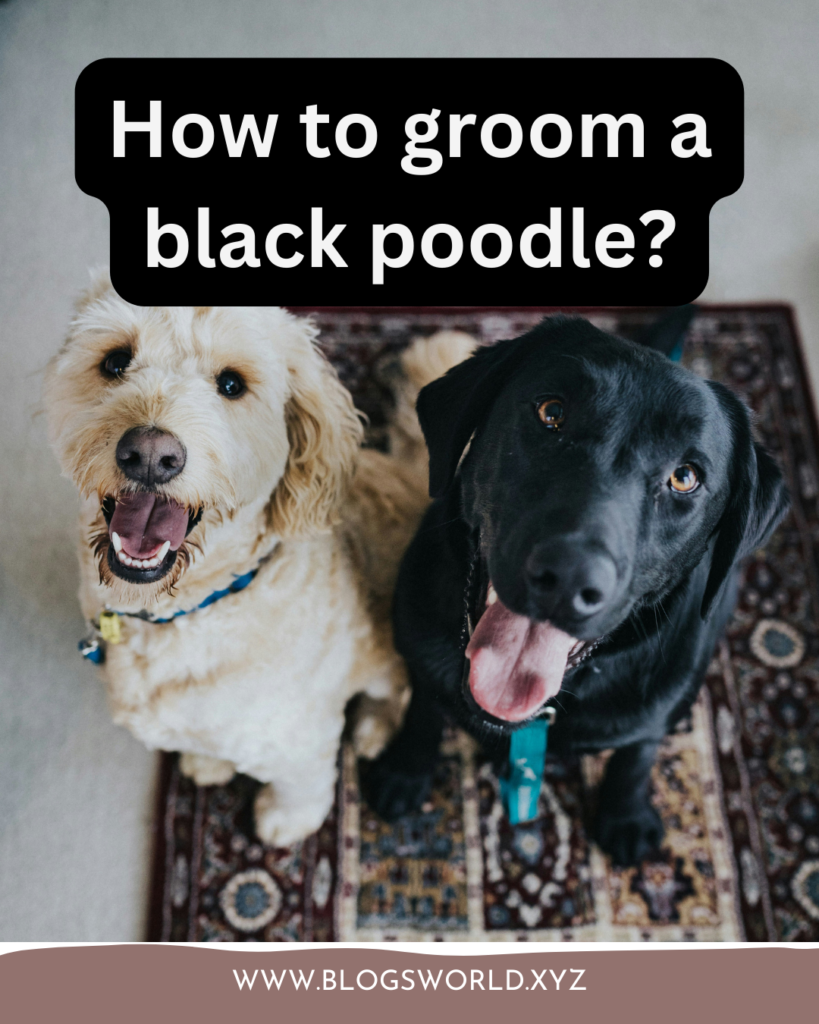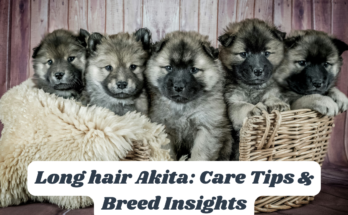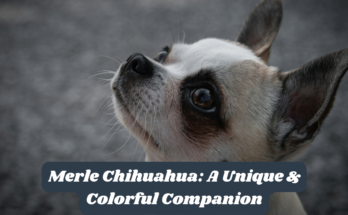Black poodles originate in a ton of colors and even though they are all beautiful in their own way, it can be problematic to choose. The breathtaking solid jet black and bright snowy pure white poodles are the two most common poodles. Black poodle can be confused with additional colored poodle. Poodles have 2 coats of hair. These consist of an inner and outer coat.
A true black poodle is of a deep dark inky black with black points and very dark brown eyes. The outer coat will not have any blue or silver coloring, and there will not be any white or silver guard hairs at all. In addition, the face will also be an inky black as well. It’s important to note that true black poodles will not “clear” or “fade” as the dog transitions from puppyhood to maturity. Poodles come in three sizes and colors: standard, miniature, or toy, and black, white, or apricot. The standard Poodle is 15 inches (ca. 38 cm) tall at the shoulder, the miniature is 15 inches and under, and the toy is under 10 inches tall. Black Poodle, which is the most popular color for this breed. Black Poodles are also the most common due to the dominant gene that produces the color.
Poodles are among the most intelligent dogs. They are eager to please, easy to train, and loyal and friendly, regardless of their color or size. All Poodles have the same temperament. The only difference with the black Poodle is the color of the coat.
The Earliest Records of the Black Poodles in History:
The earliest records of the Black Poodle date back to the 14th and 15th centuries in Europe, and the breed is one of the oldest thoroughbred dogs around. One may believe that these dogs came from France, since they are the national dog breed of the country. However, it’s said that they hail from Germany, although it’s unclear. According to the American Kennel Club (AKC), the name “Poodle” came from the German word “pudel” or “pudelin,” which means “to splash in water.”
Ancient Egyptian and Roman artifacts from the B.C. area of the first centuries have been found with carvings of dogs that resemble the Poodle. Still, it’s unclear if the dogs carved on these artifacts are ancestors of the breed or if this particular breed of that time died out.
Why Is My Black Poodle Changing Colors?
Some circumstances wherever a black poodle is not in fact whatever it seems. Amazingly, there are 3 dissimilar, distinct poodles that can be born black.
Blue, silver and true black poodles can all be born black.
There are a small number of things that you’ll want to take a closer look at in order to regulate if you have a true black poodle puppy.
- First things that you’ll famine to takings and appearance at are the points on the puppy (which should have black points and very dark brown eyes).
- Secondly, you’ll poverty to find out the puppy’s pedigree. This will give you a much better idea of what type of puppy you really have.
Blue poodles:
All blue poodles are born black and then “fade” or “clear” within 1 to 2 years of age. Subsequently, this change often takings time and black poodles are recorded as black as a result. The outer coat of blue poodles are usually as dark as black poodle’s conversely, their inner coat is naturally a fusion of numerous colors. The quantity of difference in color is age-dependent. The older the dog, the further of each color is noticeable.
Silver poodles:
All silver poodles are born black and then “clear” or “fade” during their first year of life. A silver poodle gradually is unable to find pigmentation from about 90% of the inner coat. These inner coat hairs will convert glowing or white, contingent on how thick the hair follicle. A substantial amount of the hair from the outer coat, as well as guard colors, remembers most of their color.
Exactly how Can I Make Undisputable My Black Poodle Is Not Silver or Blue?
A black poodle that has remained bred from a line that comprises silver and blue can have a much higher casual of constructing a poodle that may well not in fact be black. On the other hand, black poodles that have been bred for color and have numerous generations of black poodles, probabilities are you won’t have to worry.
What Makes A Poodle Black?
As with other colored poodles, genetics play a big role in determining the color of a puppy. For black poodles, it has been determined that there are 3 distinct enzymes that must all be present in order to produce a black poodle.
3 Essential Enzymes to Produce Black poodles:
- Eumelanin enzyme makes hair either black or brown
- TRP1 enzyme
- TRP2 enzyme
Essentially, in order for a poodle to be black, they essential have all three enzymes present (Eumelanin, TRP1, TRP2). To breakdown things down a bit further plainly, dogs transfer genes from both parents. Naturally, a poodle with two black color genes will be recognized or regarded as having the genotype BB.
Consecutively, if a poodle has one black and one brown gene then their genotype would be Bb. With black being the dominant trait over brown. If that poodle were to be bread, it has the potential of producing brown puppies depending on the genes present in the other parent.
Do Black Poodles Fade away?
Circumstances are really key here when it comes to whether black poodles fade or not.
Sunlight:
Black poodles that are outdoor a lot do have a habit of to fade a bit in line for to sunlight exposure. The effect is not dramatic, nevertheless it can be noticeable contingent on the puppy.
Diet:
One more thing that can have a negative influence on coat quality and the color is food. Low-quality dog food can in fact have an impact on the shine, healthy and color of a coat. This is to some degree that is continuously easy to standardize, since a poodle’s nutrition has an enormous impact on hair growth etc. You’ll want to make sure that the dog eats the greatest dog food for poodles.
Age:
As the poodle ages, you can suppose particular fading to occur general due to the age of the dog. Characteristically, this level of fading is extra pronounced in more senior black poodles.
Exactly how to maintenance for the black poodle coat?
Several other colors that poodles come in the care for the coat is fundamentally the similar. There are conversely a couple of other thoughts you may well poverty to make to make sure black poodle maintains its’ beautiful rich black color for as long as possible.
Black poodle coats can turn into dull or faded over time due to numerous factors. This, of course, includes sun exposure, poor diet, and older age. A great way to retain the coat as inky black as possible is to use shampoos that have color ornamental properties.

Be mindful that the deep inky coats of black poodles are at risk to light-colored debris, lint, and other fibers. So for case in point, if the black poodle often interrelates with light-colored carpeting often, for instance, you may find that they appear a little worse for wear at times. This could give the arrival that poodle may need more grooming attention. If you’d like to minimize this minor nuisance and keeps poodle observing his/her finishing spray works well to assistance reduce static and the attraction of fine fibers.
Top 5 Unique Facts about the Black Poodle:
The Poodle does not lack interesting and unique facts. Here we will discuss some of these unique facts more in-depth.
1. Poodles Have Hair, Not Fur:
The curly hair of the black Poodle does not shed due to the single-layered coat and is considered hypoallergenic. Like human hair, it will continue to grow, resulting in regular grooming requirements. The black Poodle’s hair reacts to hormonal changes and will only fall out due to such changes.
2. The Infamous Poodle Cut Has a Purpose:
The black Poodle cut helps the purpose of defensive vital organs and joints. You will see puffs and pompoms of hair in certain places, such as the torso and around the joints. It’s easy to perceive this as a fashion statement, but it’s actually for functionality.
3. Black Poodles Prefer People to Dogs:
Black Poodles love human companionship and would rather hang out with their humans rather than with other dogs. With their intelligence and human-like thinking, it’s no wonder they feel this way.
4. They Love Children:
Dogs are like children in a sense, making it no surprise that this breed does exceptionally well with children. If you have small children, a toy Poodle may work best because of their small size; however, the toy Poodle is the least tolerant of loud and rowdy children.
5. Elvis Presley Loved Poodles:
That’s right–the King himself had many black Poodles over the years and gave many to friends and family. He had a Poodle named Champagne while stationed in Germany during his military service.
Does the Black Poodle Make a Good Pet?
Black Poodles are excellent pets and can adapt to any family or climate, regardless of color. They are fun, energetic, and love to hang out with family. Their incredible intelligence makes training easy, but be sure to use positive reinforcement, as they are sensitive creatures and will be afraid of harsh tones.
Early socialization is key to ensuring black Poodle gets along with other pets in the household, but naturally, they have a terrific temperament and do well with other pets, even cats. Black Poodles are not aggressive, but they are protective of their family.
How to groom a black poodle?
- Black poodles bath once each two weeks.
- Brush the coat earlier bathing to take away dirt.
- Expending lukewarm water carefully wet the entire body.
- Use a shampoo and conditioner that are prepared for dogs.
- Rinse off.
- Pat-dry pooch and then wipe the confidential of the ears.




